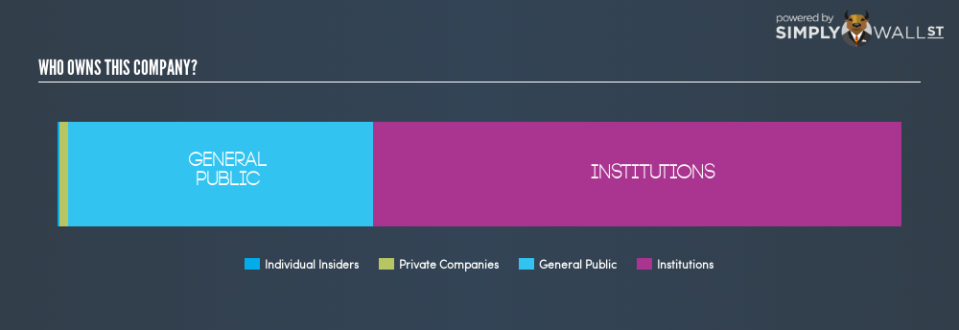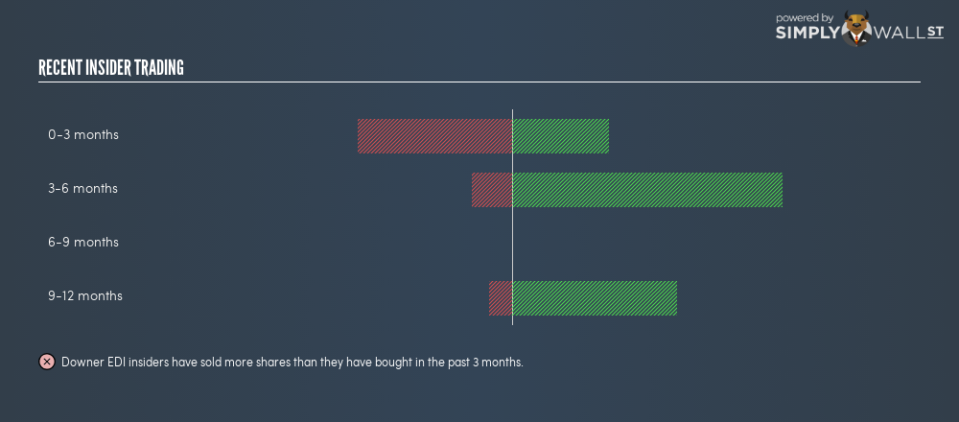Why Downer EDI Limited’s (ASX:DOW) Investor Composition Impacts Your Returns

I am going to take a deep dive into Downer EDI Limited’s (ASX:DOW) most recent ownership structure, not a frequent subject of discussion among individual investors. When it comes to ownership structure of a company, the impact has been observed in both the long-and short-term performance of shares. Since the same amount of capital coming from an activist institution and a passive mutual fund has different implications on corporate governance, it is a useful exercise to deconstruct DOW’s shareholder registry.
View our latest analysis for Downer EDI
Institutional Ownership
In DOW’s case, institutional ownership stands at 62.43%, significant enough to cause considerable price moves in the case of large institutional transactions, especially when there is a low level of public shares available on the market to trade. These moves, at least in the short-term, are generally observed in an institutional ownership mix comprising of active stock pickers, in particular levered hedge funds, which can cause large price swings. For DOW shareholders, the potential of this type of share price volatility shouldn’t be as concerning as hedge fund ownership is is not significant,indicating few chances of such sudden price moves. While that hardly seems concerning, I will explore further into DOW’s ownership type to find out how it can affect the company’s investment profile.
Insider Ownership
I find insiders are an important group of stakeholders, who are directly involved in making key decisions related to the use of capital. In essence, insider ownership is more about the alignment of shareholders’ interests with the management. DOW insiders may only hold a a minor stake in the company, but this is a relatively significant holding given it is a large-cap stock. A higher level of insider ownership has been linked to management executing on high-returning projects instead of expansion projects for the sake of apparent growth. It would also be interesting to check what insiders have been doing with their shareholding recently. Insider buying can be a positive indicator of future performance, but a selling decision can be simply driven by personal financial requirements.
General Public Ownership
A big stake of 36.15% in DOW is held by the general public. With this size of ownership, retail investors can collectively play a role in major company policies that affect shareholders returns, including executive remuneration and the appointment of directors. They can also exercise the power to decline an acquisition or merger that may not improve profitability.
Private Company Ownership
Another important group of owners for potential investors in DOW are private companies that hold a stake of 1.04% in DOW. These are companies that are mainly invested due to their strategic interests or are incentivized by reaping capital gains on investments their shareholdings. However, an ownership of this size may be relatively insignificant, meaning that these shareholders may not have the potential to influence DOW’s business strategy. Thus, investors not need worry too much about the consequences of these holdings.
Next Steps:
The company’s high institutional ownership makes margin of safety a very important consideration to existing investors since long bull and bear trends often emerge when these big-ticket investors see a change in long-term potential of the company. This is to avoid getting trapped in a sustained sell-off that is often observed in stocks with this level of institutional participation. However, ownership structure should not be the only focus of your research when constructing an investment thesis around DOW. Rather, you should be looking at fundamental drivers such as the intrinsic valuation, which is a key driver of Downer EDI’s share price. I highly recommend you to complete your research by taking a look at the following:
Future Outlook: What are well-informed industry analysts predicting for DOW’s future growth? Take a look at our free research report of analyst consensus for DOW’s outlook.
Past Track Record: Has DOW been consistently performing well irrespective of the ups and downs in the market? Go into more detail in the past performance analysis and take a look at the free visual representations of DOW’s historicals for more clarity.
Other High-Performing Stocks: Are there other stocks that provide better prospects with proven track records? Explore our free list of these great stocks here.
NB: Figures in this article are calculated using data from the last twelve months, which refer to the 12-month period ending on the last date of the month the financial statement is dated. This may not be consistent with full year annual report figures.
To help readers see past the short term volatility of the financial market, we aim to bring you a long-term focused research analysis purely driven by fundamental data. Note that our analysis does not factor in the latest price-sensitive company announcements.
The author is an independent contributor and at the time of publication had no position in the stocks mentioned. For errors that warrant correction please contact the editor at editorial-team@simplywallst.com.

 Yahoo Finance
Yahoo Finance 

